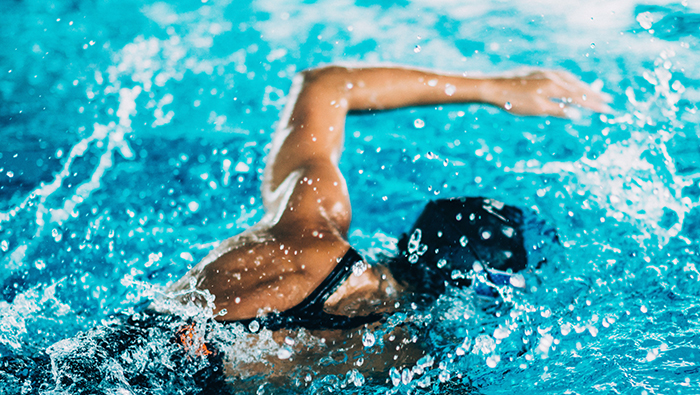
Did you know that aquatic exercise is a great weight loss tool? Aquatics classes like swimming and water aerobics can help you burn calories and increase your lean muscle mass.Plus, water-based exercises have some major advantages over traditional workouts. That means you may enjoy water aerobics way more than your typical exercise routine.
But what exactly is aquatic exercise? And what are all the benefits we have been touting here? We are giving you the answers to these questions and more next, so keep reading!
Aquatic exercise simply means exercise that takes place in the water. Swimming is an exercise that takes place in the water, too. But for the purposes of this article, we will mostly be discussing water aerobics.Water aerobics classes typically take place in a pool. They last about an hour, during which your water aerobics instructor will guide you through aerobic movements.
Most aquatics classes offer a three-part structure, including a warm-up, a series of cardiovascular and/or strength exercises, and a cooldown. The movements are very low-impact and moderate in intensity.
Who Can Benefit from Water Aerobics?
Water aerobics is one of the best entry-level workouts for people who are new to exercise. That is because aquatic exercise is low-impact, relatively easy, and highly effective.
Being that water aerobics are low-impact, this type of exercise is also great for the following people:
Older adults
Pregnant people
Individuals suffering from acute or chronic pain conditions
People with arthritis and other joint problems
Individuals in rehabilitation for an injury
People with Meniere’s disease and other balance-related conditions
One important thing to note is that people who do not know how to swim can still partake in water aerobics. That is because aquatics classes take place in the shallow end of the pool, so you will be able to stand the entire time.
How Does Aquatic Exercise Help With Weight Loss?
The only surefire way to lose weight is to go into a calorie deficit. And there are two ways to achieve a calorie deficit:
Eat fewer calories than you burn
Burn more calories than you eat
Eating fewer calories than you burn would require you to go on a diet. However, studies show that low-calorie diets may help you lose weight at first, but you likely will not keep that weight off in the long term.
So, the better option for sustainable and maintained weight loss is through exercise. After all, doing exercise burns calories directly and indirectly. Here is what we mean by that.
Exercise directly burns up calories in the bloodstream. This is because calories are a type of energy that our bodies use as fuel during a workout.
Exercise also burns up calories indirectly by increasing lean muscles. The more lean muscle you have, the higher your resting metabolic rate.
“Resting metabolic rate” refers to the number of calories we burn when we are at rest. So, the more lean muscle you have, the more calories you burn, even when you aren’t doing anything!